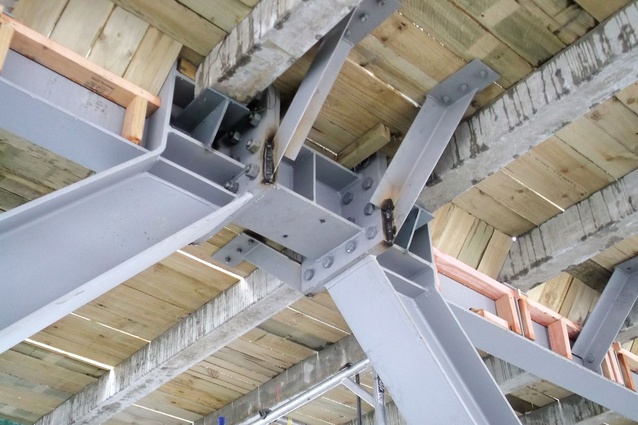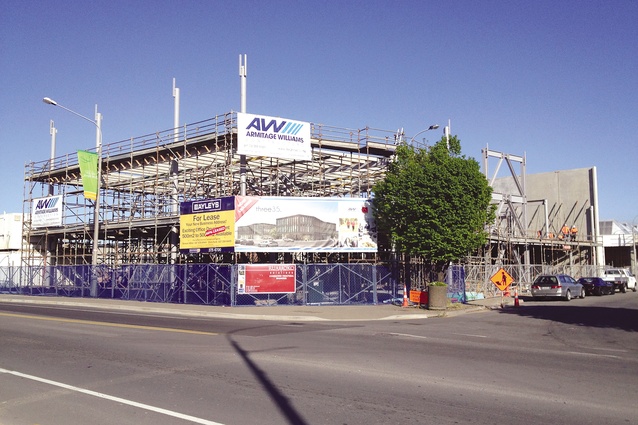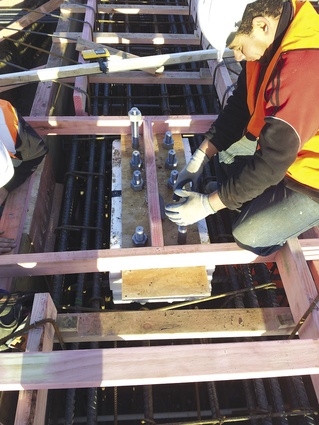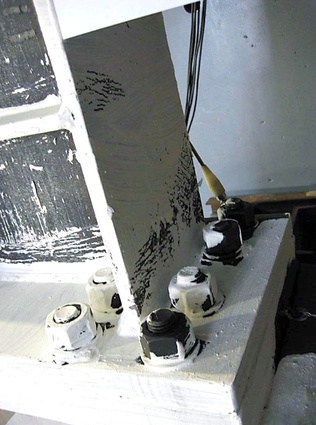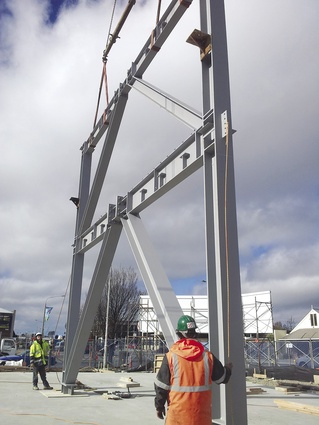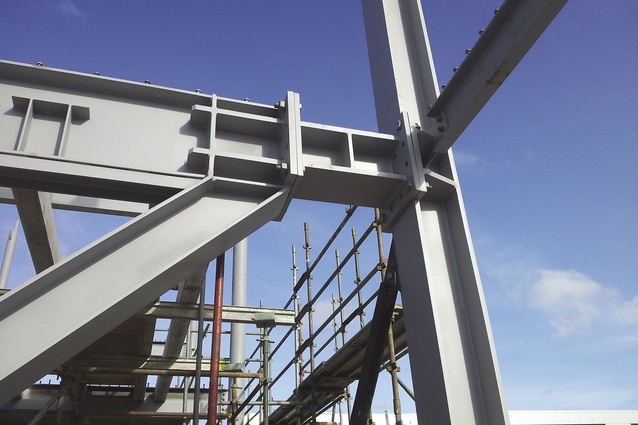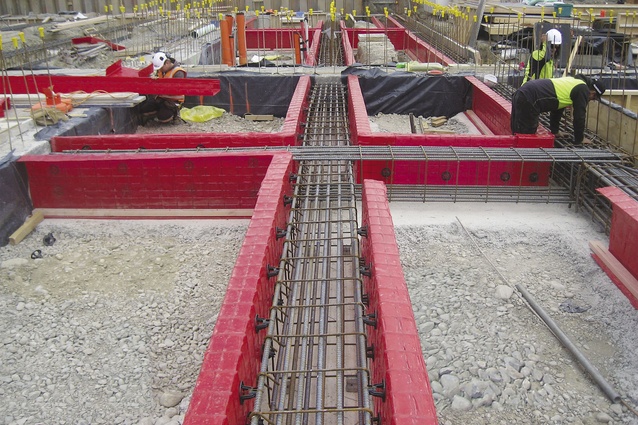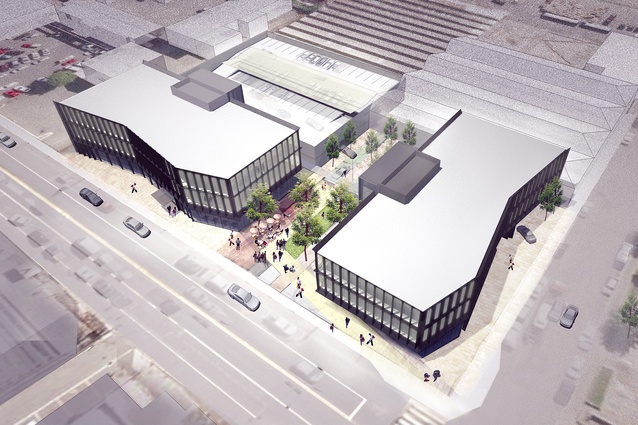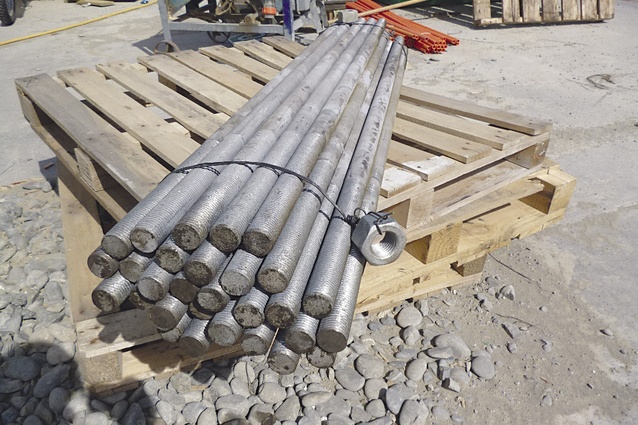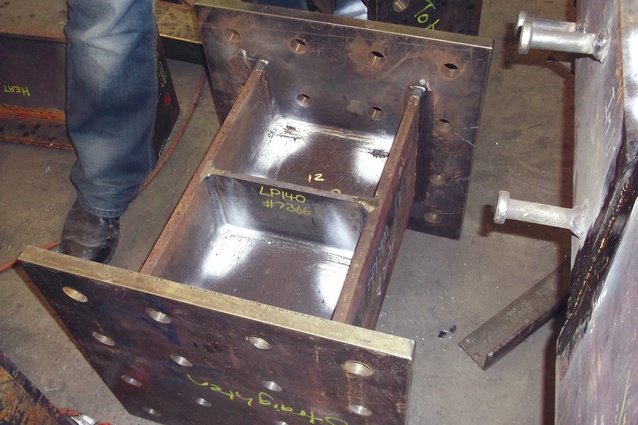Bolted strength
Three35 is a development based on a clear goal: damage avoidance. Incorporating a mix of new technology and building techniques, the completed development should attract lower insurance premiums, reduce potential damage, and provide assurance that in the event of a large earthquake, the building can be reoccupied quickly.
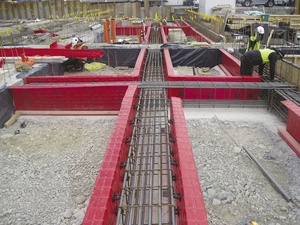
Armitage Williams Construction project manager Mason Williams said damage avoidance measures were put in place from the start of the project, beginning with the piling.
“We needed to do screw piling down to 25 metres on the first office building because of conditions, but we didn’t need to for the other two buildings,” he said. “The client elected to do it on the other two buildings anyway, not only for a continuity of services, but for damage avoidance. “In a potential event the buildings won’t have differential settlement, and in the event of a major earthquake, the buildings will be less susceptible to tilting and will hold up a lot better than if they had a more traditional shallower foundation,” he said.
When completed Three35 will include two three-storey office buildings and a multi-level car park building. MediaWorks, including 3 News and a host of radio stations, will move into the completed development, along with a number of professional services organisations.
Ruamoko Solutions senior design engineer Julian Ramsay said the primary damage avoidance technology for the two office buildings was the use of bolted eccentric brace frame (EBF) seismic links, a first for New Zealand. “Eccentric brace frames are an existing technology that resist seismic loads and have a yielding shear link,” he said. “The links yield and dissipate seismic energy and protect the remainder of the structure. “The new technology used for Three35 is an adaptation of these. The difference is the active link portion is bolted in, and there is increased detailing to reduce yielding outside of the active link in the collector beam.
“To fix damage with the existing technology you have to cut out the link and collector beam and re-weld. It is a slow and difficult process. “With the new technology the link comes in as an element … the adjacent elements are not damaged.” In the event of an earthquake, the link is simply replaced; the bolted section is unbolted and replaced with a new link. “It’s not anywhere near as difficult as trying to cut out and re-weld a traditional EBF link. “With the new links you are also isolating the link from the floor, while conventional links often support the floor and are connected to the underside of it.”
Mr Ramsay said the use of the new technology would provide building owners with assurance that their building could be reoccupied sooner after an earthquake, as well as providing an added degree of protection for the building. “It ensures that any damage is focused into a well-detailed area such as this link … and the link is designed to yield in a controlled manner. Effectively it protects all other elements because it is the weakest link.”
In 2010 the University of Toronto did some research into the bolted EBF seismic links used in the Three35 buildings. “Evidence was found that these things were going to work,” he said. “We piggy backed on that research and sought guidance from Steel Construction New Zealand (SCNZ). “Because nobody has done it in New Zealand before it was difficult to get any design guidance. “It could even be a first in the world, I’m not sure. But it’s definitely a first in New Zealand.”
Architect Richard Hayman said detailing in the project allowed a lot more movement without causing damage. “There is a high resilient junction between different building elements,” he said.
With a scheduled completion date of April 2013 for the first building, Mr Williams said construction was on target. “In the first office building all of the main structural steel, including the bolted EBF frames, has been erected, and the first two floor slabs have been poured,” he said.
“Most of the EBF frames have been erected now as well.” Mr Williams said the building was modelled to achieve a four Green Star rating, and with the damage avoidance technology limiting the amount of repair work required in the event of a future earthquake, the development was holistically a very sustainable design. “In all the office areas there is a suspended ceiling grid which has its own engineering. The fit outs will be engineered to work with the suspended ceiling grid as well for optimal performance in a future event,” he said.
“Around the perimeter the suspended ceiling has a concealed overlap that in the event of a large earthquake would allow some movement of the ceiling grid without causing damage, and it reduces the risk of ceiling tiles falling.”
The precast stairs are designed around a similar principle, incorporating recent changes to regulations. “After all the stairs fell down in a building in town the design guidelines for precast stairs changed. The design we used incorporates the new regulations and allows the flight of stairs to slide on top of the landing, as opposed to buckling and falling, because there is an overlap between the stairs and the landings.”
When completed Three35 will be a dominant architectural presence on Lincoln Road, a main thoroughfare into central Christchurch.
“The site has 100 metres of frontage to Lincoln Road. When we took the design to the urban design panel of council, they encouraged us to bring the building out to the road front.
“The buildings will feature architectural solar shade running vertically outside the glazed curtainwall.” The Three35 precinct will offer 5500 square metres of office space when the second building and car park open in July 2013.

